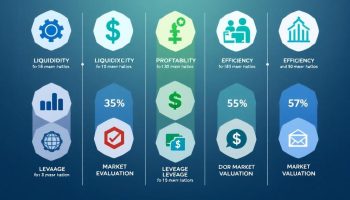Project success is a complex and multifaceted term. There are many ways to define project success criteria, and it’s important to carefully consider them before you begin your project.
In this blog post, we’ll explore the different types of project success criteria. So you can use it in your projects, as well as some tips for defining each one successfully.
What are Project success criteria?
The criteria for your project is an outline of what defines successful completion of the project, and it should be defined before you begin. It tells everyone involved in the project exactly how to measure whether or not they’ve completed their tasks successfully.
It also helps in decision-making throughout the duration of the project. So that no one gets off track focusing on irrelevant issues. The project’s success criteria also help everyone involved prioritize their tasks and make decisions about which issues are most important to resolve.
What are some types of Success Criteria?
The project manager should define success criteria for the project. This will help the project team know if they are meeting expectations or not.
There are three main ways to define your Project’s Success Criteria:
Outcome-Based:
Outcome-based success criteria are defined by the result or product of the project. These are tangible results that need to measure after finishing the work. It includes increased revenue generation, decreased number of customer complaints per year, etc.
Customer Experience based:
Customer experience-based success criteria are defined by the way your project will benefit your customer. This reflects subjective feelings or perceptions in the eyes of a customer. It includes an increased satisfaction level, improved ease-of-use, etc…
Results-Based:
Results are similar to outcomes but they can be measured before work has been finished. For example, A project’s success criteria could include that all tasks have been completed by a certain date and no quality or usability issues will arise from those tasks before this point is reached.
Steps to define project success criteria:
The project success criteria will vary from project to project. These important elements will allow you to measure whether the project has reached its goal. They can also help to guide your team through each stage of the process.
Here are the steps to define success criteria;
Step1:
The first step in defining project success criteria is understanding what it will take for you to reach the end result of the project successfully. You need to outline it in your overall project plan or goals.
Once you understand that, then you can begin to create different types of success criteria and decide how you will measure whether or not you’ve reached them.
Step2:
Talk to the project team and stakeholders to get their input on your success ideas. You should always consult with your team when defining project success criteria.
Because they are the ones who will be doing most of the work involved in reaching these goals. So understanding what is important for them can help you better understand how to define it successfully.
Step3:
Now Set up a plan to monitor progress on your metrics throughout the project to ensure you are making progress. This will help make sure your criteria are working and everyone involved in the project knows what they need to do. As well as how important it is comparing with other tasks on their list.
You do it either manually or with software tools. It’s important to monitor your project success criteria regularly, otherwise, you run the risk of not meeting them.
Step4:
If at any point during the project you feel any issue. And you need to make adjustments or change some parts. Then by all means communicate with those involved and adjust accordingly.
You may need to make adjustments several times throughout the project. But try not to get too caught up in the minutia, because this could distract you from your overall goal of reaching them successfully.
Step5:
Focus on measurable results that support overall goals when determining the types of Project Success Criteria. When deciding which type of success criterion would be best for each specific goal, try choosing criteria that have clear & easy-to-measure measurements associated with them.
This way everyone knows exactly where things stand throughout every stage of development – without having to wait until completion before knowing how successful they’ve been.
Step6:
It’s important to remember that different types of projects will require project success criteria with varying levels of complexity. So if you’re working on a more difficult task of trying to reach an outcome-based goal.
Then your project success criteria might need to be slightly less straightforward than other projects in order to ensure the highest level of detail and accuracy possible.
Step7:
Don’t forget to document your project success criteria and share them with the rest of the team. When you’ve completed this step, then be sure to put it in a place where everyone involved has easy access – like on your project plan or shared documentation folder.
This way everyone will know what is expected of them throughout their process & can make any adjustments needed before they get too far down the road.
Benefits of defining the project success criteria:
When project manager defines project success criteria in detail, they’re able to measure their team’s progress in a more accurate manner.
Here are some of the benefits of defining the project success criteria:
- It makes sure that the project is successful from the beginning.
- Helps to avoid unexpected problems that can derail your overall goals & timeline.
- You won’t have to make changes during the process and it will be time-efficient.
- The team members can work with a clear understanding of what they need to do and how important their tasks are in relation to other parts of the project.
How do you write project success criteria?
One of the most important aspects of defining a successful project is having clearly defined criteria. Without proper success criteria, it’s possible that the deliverables will not meet expectations or even be evaluated correctly.
These are the points to keep in mind while writing it;
- Cost: Ensuring that the project is within budget constraints will help to ensure its success.
- Time: The project should be completed on time to ensure that all milestones are met.
- Scope: The scope of the project must be properly defined and controlled throughout the life cycle in order for it to succeed.
- Quality: Ensuring proper quality control is critical, as a failure to do so may result in rework or low user satisfaction.






